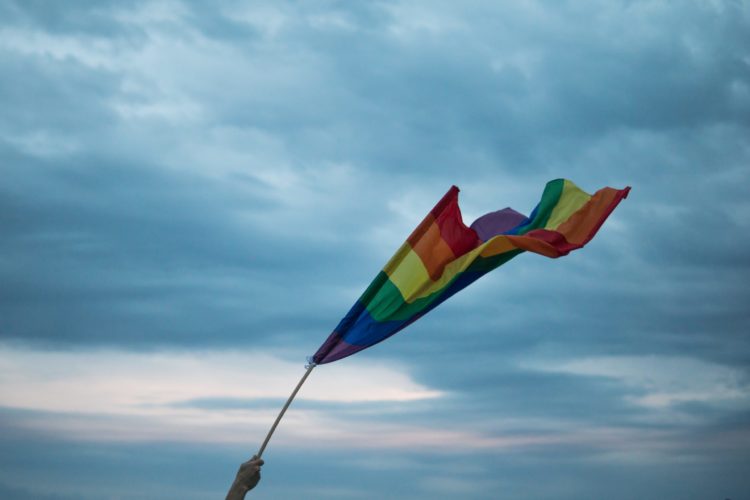The U.S. Supreme Court this week (June 17, 2020) ruled that the Civil Rights act of 1964 prohibits discrimination based on sexual orientation and gender identity, which the majority said were inherently included under the law's protection of discrimination based on sex. It was celebrated as a landmark decision, and somewhat surprising victory for gay rights, especially in more than half the states of the U.S., where it was legal for employers to fire someone for being gay, bisexual or transgender.
But the question remains: Which workers did the court ruling include? Well, that depends on which headline you're reading.
When I read the CBS News headline ("Supreme Court rules federal civil rights law protects LGBTQ workers"), I got the impression this decision affected any LGBTQ worker, regardless of whether the worker is lesbian, gay, bisexual, transgender, and/or queer. I continued with that assumption after seeing the similar but longer headline from NBC News: "In landmark case, Supreme Court rules LGBTQ workers are protected from job discrimination."
But then I saw The New York Times headline — "Civil Rights Law Protects Gay and Transgender Workers, Supreme Court Rules" — and wondered if it only applied to gay and transgender workers. Similarly, The Washington Post ran "Supreme Court says gay, transgender workers protected by federal law forbidding discrimination."
So, which is it? Does the court decision protect LGBTQ workers? Or just workers who are gay, transgender, or both gay and transgender?
This is not simply me picking nits, because the decision provided some challenges for writers, copy editors, and others obsessed with precision in word choice, in part because it hard to parse out what was or was not meant. (Indeed, different interpretations of language were at the heart of the how the court's majority and dissenters voted.)
The court had heard arguments about the firings of three individuals. Aimee Stephens was a transgender woman who was fired after she announced she would transition. Skydiving instructor Donald Zarda lost his job after telling a customer he was gay. Gerald Bostock was fired after joining a gay softball league.
Neil Gorsuch, writing for the 6-3 majority, wrote that "an employer who fires an individual merely for being gay or transgender violates Title VII."
On the surface, that seems like the perfect summary nut of the news. Or is it? If you're tasked to write a headline for that story or summarize that for the homepage, what do you write?
The court's decision affects a wide swath of people, and yet the question is whom. Most of the references to "sexual orientation" and "gender identity" come not from Gorsuch, but from Samuel Alito's dissenting opinion. The cases reviewed by the court involved two gay people and one transgender person. The only time "LGBTQ" appears in the ruling is in a footnote referencing the Lesbian, Gay, Bisexual, Transgender, Queer Plus (LGBTQ+) Resource Center based at the University of Wisconsin-Milwaukee. So is it presumptuous to write "LGBTQ workers" in the headline? Or does writing that "gay and transgender workers" are protected imply that a bisexual worker would not be affected? Or what if someone defines their gender identity using a word other than "transgender," or uses a term for their sexual orientation that isn't widely used?
Language can limit as well as describe
The language that people use to describe themselves continues to evolve and change, and some fields catch up faster than others. The court ruling stated "in each of these cases, an employer allegedly fired a long-time employee simply for being homosexual or transgender." That term is now considered clinical and antiquated, and helps prove a bigger point about LGBTQ+ language that's useful for copy editors and writers to remember: For many people, the labels they use for their gender identity or sexual orientation has no synonym, in part because they want to be in control of how they are described.
What people used to describe as "gay rights" is now described as "LGBTQ rights" or "LGBTQ+ rights." "Gay" was a word fought over in the 1980s, during the height of the AIDS epidemic, when the traditional press typically used "homosexual" as a descriptor. In the decades since, it has sometimes been used as a gender neutral term, though for some, it has come to be associated mainly with men who are sexually and/or romantically attracted to only men — and yet that only describes some people. "LGBTQ" then became a more inclusive term, but the plus (+)is often added to indicate there are even more letters that better describe how people view themselves and live their lives. For similar reasons, "same-sex marriage" was seen as a more inclusive and more accurate term than "gay marriage," because there could be a same-sex marriage where neither partner identifies as gay.
Some might dismiss this as being too sensitive or pedantic, but these details are important. I had a professor in college who told my class about a newspaper that had to run a correction because a Black man was referred to as "African-American," even though he was not American. That stuck with me, as it demonstrated that there's no detail too small to sweat.
Language changes, as does the ownership and meaning of that language. Journalists need to constantly evaluate whether their language is not only accurate, but has kept up with the times. The LGBTQ+ Experiment, is a resource that tries to explain the nuances of terms — and why they matter to the people whose lives they are meant to describe.
Patrick Garvin spent 15 years working in newsrooms at daily newspapers, including The Boston Globe. He created The LGBTQ+ Experiment, a website and newsletter to help people better understand LGBTQ+ issues. He now lives in St. Louis, working as a web designer and freelancer.



